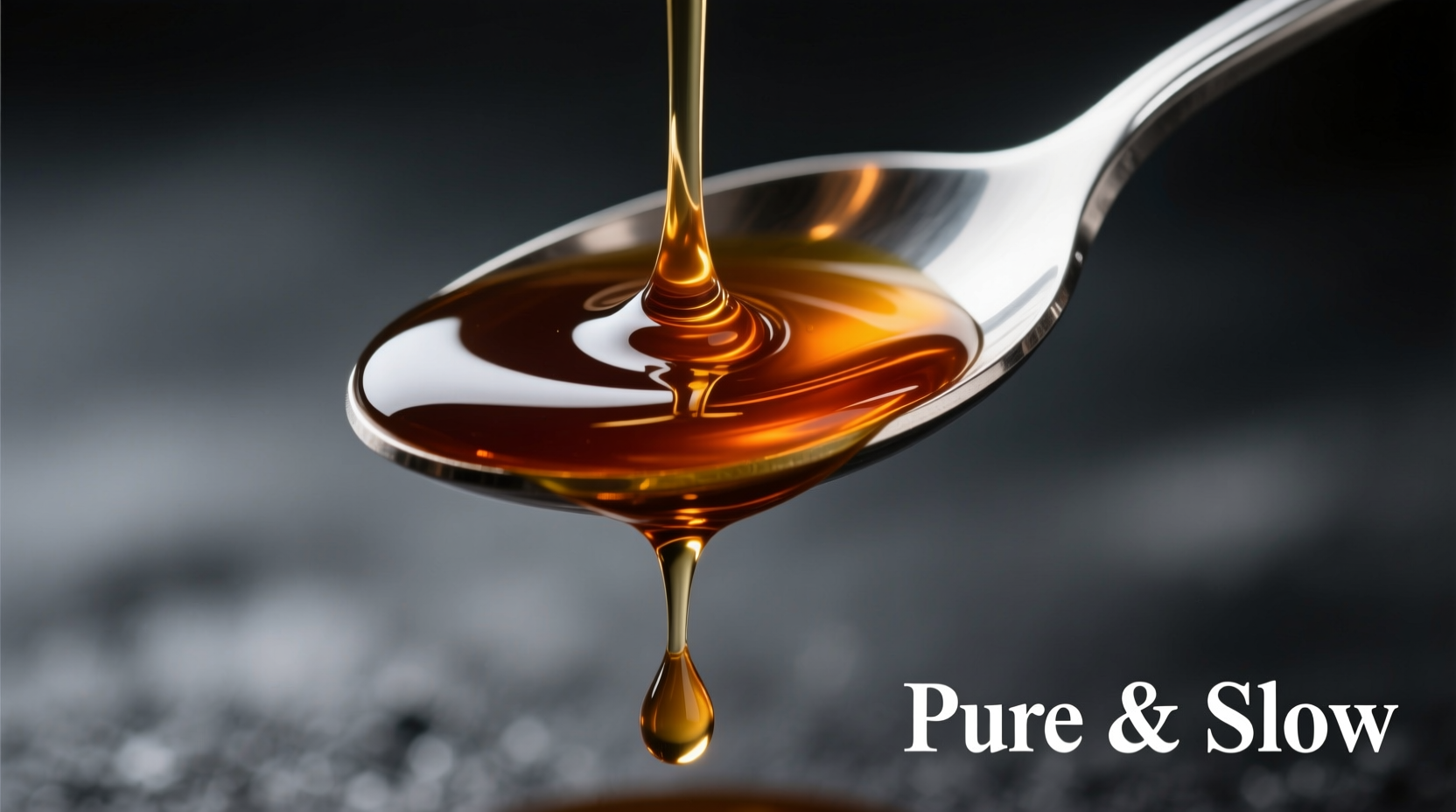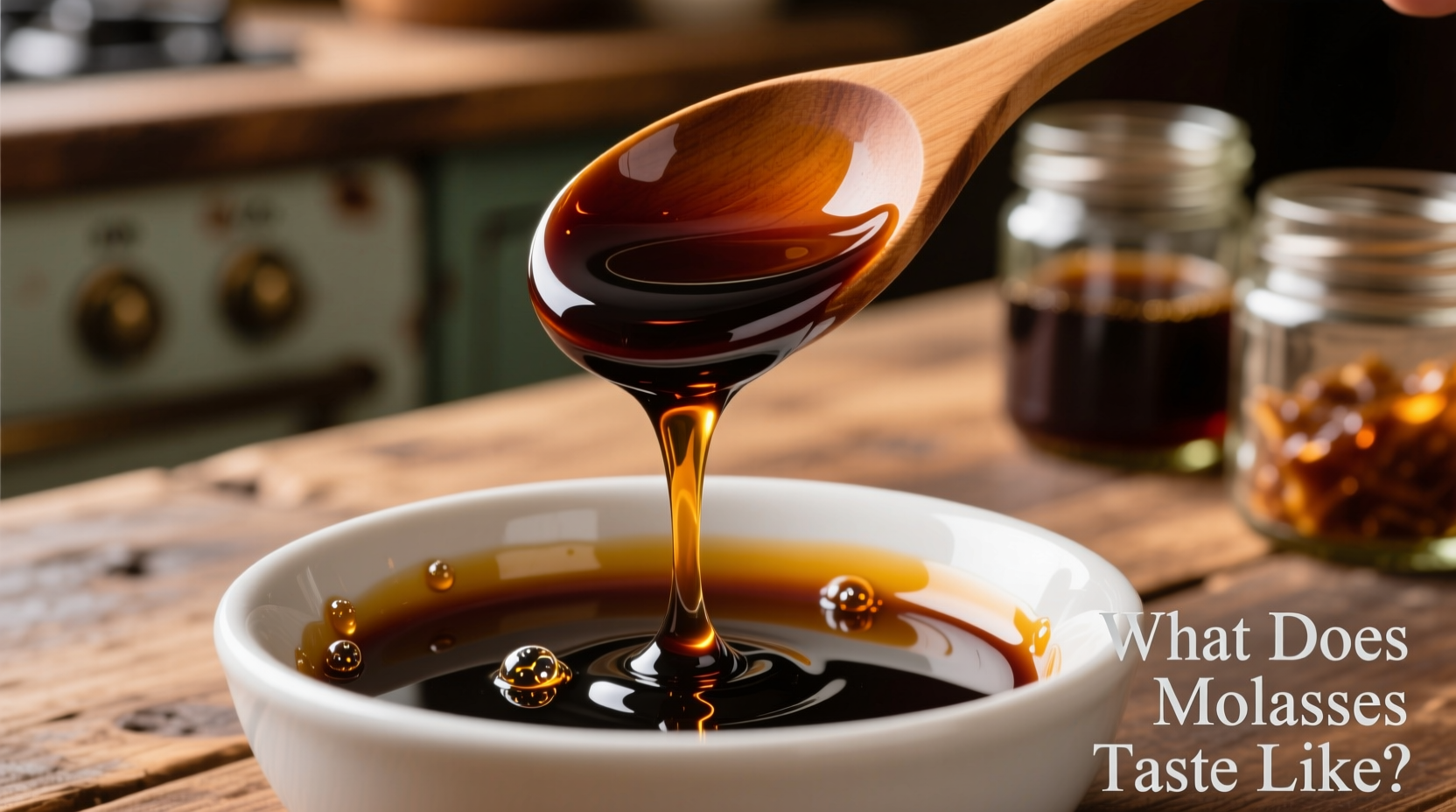Molasses has a rich, complex flavor profile characterized by deep caramel notes with earthy undertones, moderate bitterness, and a distinctive tangy finish. Light molasses offers mild sweetness similar to brown sugar, dark molasses delivers robust caramel and toffee flavors with subtle bitterness, while blackstrap molasses presents intense bitterness balanced by smoky, mineral-rich notes that many compare to licorice or burnt sugar.
The Distinctive Flavor Profile of Molasses Explained
When you ask what does molasses taste like, you're seeking to understand one of baking's most complex sweeteners. This thick, dark syrup created during sugar refining carries a flavor journey that evolves with each type. Unlike simple sugars that deliver straightforward sweetness, molasses offers layered tasting notes that interact uniquely with other ingredients in your recipes.

How Different Molasses Types Compare Flavor-Wise
Understanding what molasses tastes like requires recognizing the significant differences between varieties. The refining process directly impacts flavor intensity and complexity:
| Molasses Type | Sweetness Level | Primary Flavor Notes | Bitterness | Best Culinary Uses |
|---|---|---|---|---|
| Light (First Boiling) | High | Caramel, honey, mild brown sugar | Minimal | Cookies, cakes, glazes |
| Dark (Second Boiling) | Moderate | Toffee, burnt sugar, mild tang | Moderate | Gingerbread, baked beans, barbecue sauce |
| Blackstrap (Third Boiling) | Low | Smoky, mineral, licorice-like | High | Small amounts in robust recipes, health tonics |
Why Molasses Tastes Different Than Other Sweeteners
When considering what does blackstrap molasses taste like compared to alternatives, the key difference lies in its complex chemical composition. Unlike refined white sugar which is nearly pure sucrose, molasses retains significant amounts of:
- Natural invert sugars (glucose and fructose) that create deeper caramelization
- Organic acids that contribute to its characteristic tang
- Minerals like iron, calcium, and magnesium that add subtle bitterness
- Maillard reaction compounds from the sugar boiling process
These components interact to create a flavor profile that's simultaneously sweet, bitter, sour, and umami—making molasses one of the few sweeteners that activates multiple taste receptors simultaneously.
Historical Evolution of Molasses Flavor Profiles
The distinctive taste of molasses has evolved significantly through history as production methods changed:
- 1600s-1700s: Early colonial molasses had inconsistent flavor due to primitive boiling techniques, often containing impurities that created unpredictable bitterness
- 1800s: Standardized triple-boiling process developed, creating the distinct light/dark/blackstrap flavor spectrum still used today
- Early 1900s: Sulfur dioxide began used as a preservative in some molasses, adding subtle chemical notes that affected flavor perception
- Modern Era: Unsulfured molasses became standard for culinary use, allowing the pure sugar cane flavor to shine through without chemical interference
When to Use Each Molasses Type Based on Flavor
Understanding what does molasses taste like helps you select the right type for your culinary needs. Each variety serves specific purposes based on its flavor chemistry:
Light Molasses Applications
Choose light molasses when you want subtle sweetness without overpowering other flavors. It works perfectly in:
- Delicate cakes and muffins
- Fruit-based desserts where you want to enhance natural sweetness
- Light-colored glazes that shouldn't darken significantly
Dark Molasses Applications
Dark molasses provides that signature robust flavor for traditional recipes:
- Authentic gingerbread (the bitterness balances the spicy heat)
- Baked beans (complements the savory tomato base)
- Barbecue sauces (adds depth without overwhelming smokiness)
Blackstrap Molasses Applications
Due to its intense flavor profile, blackstrap requires careful handling:
- Use in small amounts (1-2 tsp) to boost mineral content in health-conscious baking
- Combine with robust spices like cloves and allspice in winter beverages
- Mix with stronger sweeteners like honey when making medicinal syrups
Common Flavor Pairings That Enhance Molasses
Professional bakers know that understanding what molasses tastes like means recognizing which ingredients complement its complex profile:
- Warm spices (cinnamon, ginger, cloves) - enhance the caramel notes while balancing bitterness
- Citrus zest - the acidity cuts through heaviness and brightens the flavor
- Coffee or espresso - deepens the roasted notes without adding bitterness
- Buttermilk or yogurt - the tang complements molasses' natural acidity
Storage Tips to Preserve Molasses Flavor
Molasses flavor degrades when improperly stored. To maintain optimal taste:
- Store in a cool, dark place away from heat sources (flavor compounds break down above 75°F/24°C)
- Keep tightly sealed—molasses absorbs surrounding odors that can alter its taste
- Refrigeration extends shelf life but makes molasses harder to pour (gently warm before use)
- Discard if you notice crystallization or mold growth, as these indicate flavor degradation
Why Molasses Tastes Different in Baked Goods vs. Liquid Form
Many home bakers wonder why what does molasses taste like seems different when tasted straight versus in finished recipes. This phenomenon occurs because:
- Heat during baking transforms the complex sugars, creating new caramelization compounds
- Interaction with leavening agents (like baking soda) neutralizes some acidity
- Other ingredients absorb and redistribute the flavor compounds throughout the dish
- Temperature affects taste perception—molasses tastes sweeter when warm
For best results, always taste your molasses-based batter before baking and adjust seasoning as needed, since the final flavor profile will differ from the raw mixture.
Practical Tips for First-Time Molasses Users
If you're unfamiliar with molasses flavor, these practical tips will help you incorporate it successfully:
- Start with dark molasses for most recipes—it offers the classic molasses flavor without overwhelming bitterness
- Measure molasses by lightly coating your measuring spoon with oil to prevent sticking
- When substituting for sugar, use 1¼ cups molasses for every 1 cup sugar and reduce liquid by ¼ cup
- Balance intense molasses flavors with a pinch of salt to enhance sweetness perception
Frequently Asked Questions About Molasses Flavor
Is molasses supposed to taste bitter?
Yes, molasses contains natural bitterness from the sugar refining process, especially in darker varieties. Light molasses has minimal bitterness, while blackstrap molasses has pronounced bitter notes balanced by smoky, mineral flavors. This bitterness is normal and contributes to molasses' complex flavor profile that distinguishes it from simple sweeteners.
Why does my molasses taste sour?
Molasses naturally contains organic acids that create a subtle tang, which many describe as sour. This acidity is part of molasses' distinctive flavor profile and actually helps balance its sweetness. If your molasses tastes excessively sour or vinegary, it may have spoiled—properly stored molasses should maintain a consistent flavor for 1-2 years.
How does molasses compare to honey in flavor?
Molasses and honey differ significantly in flavor profile. Honey offers floral, fruity sweetness with varying notes depending on the nectar source, while molasses provides deep caramel notes with earthy undertones and moderate bitterness. Molasses has a more complex, less straightforward sweetness with a distinctive tangy finish that honey lacks. Blackstrap molasses, in particular, has a robust, almost savory quality unlike any honey variety.
Can I substitute maple syrup for molasses?
While both are liquid sweeteners, maple syrup and molasses have distinctly different flavor profiles. Maple syrup offers sweet, woody notes without molasses' characteristic bitterness and tang. In recipes calling for light molasses, you can substitute equal parts maple syrup with acceptable results, but dark or blackstrap molasses cannot be adequately replaced as their robust flavors are essential to the recipe's character. For gingerbread or baked beans, maple syrup won't provide the necessary depth.
Does molasses taste like chocolate?
Molasses shares some flavor compounds with dark chocolate, particularly the bitter notes and deep caramel undertones, but they're distinctly different. High-quality dark chocolate has fruity, floral notes that molasses lacks, while molasses has a distinctive tangy finish not found in chocolate. In baking, molasses can enhance chocolate flavor when used in small amounts, but it doesn't taste like chocolate on its own.











 浙公网安备
33010002000092号
浙公网安备
33010002000092号 浙B2-20120091-4
浙B2-20120091-4